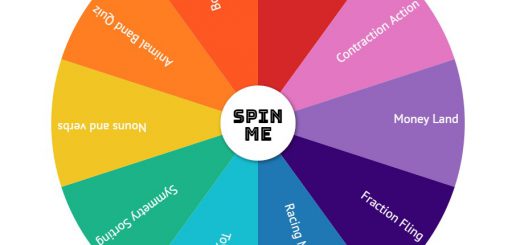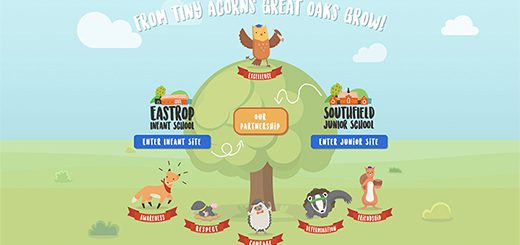The Ultimate Guide to Twitter for Schools – 2023

For every scare story you may read in the media about the evils of social media, there are millions of people happily using social media to connect with like-minded people the world over as well as school twitter accounts. By following some basic good practice principles in this guide, you can join them – whether you want to use Twitter as an individual teacher, school leader, or as a school account.
Edutwitter, as it is known, is a vast network of educators, teachers, school leaders, support staff, aspiring teachers and former teachers all connecting to share ideas, resources, tales from the classroom, and general educational chat. In a recent survey commissioned by the Edge Foundation, Twitter ranked as the most trusted social media site for teachers looking for resources, news and connections in education. For many in education it is the primary source of relevant and up-to-date news and information. As well as following fellow teachers, you could follow staff from educational publications, Ofsted, Local Authorities, and educational consultants. So many give their time and expertise very generously due to the community nature of the chat. As the name suggests, you get the most out of social media when you are social too, and join in conversations to make new connections.
We have written this school Twitter guide to help you on your way if you are thinking about joining. Whether you are a teacher or a school leader we have pulled together the key information and advice you need to get started, and we tackle some of the common concerns too.
Starting Out
When you start out on Twitter you will need to decide on a “handle” which is the name you are known as on Twitter. For example our business account has the handle @HeyGreenhouse. Many teachers like to keep their real identity private for the purpose of not identifying their school. For example you may want to use Twitter as a place to air any stresses or discuss information which would be considered sensitive and personal if the public knew which school you are discussing. Of course you want to be sure that you do not cross any boundaries with this, and ensure your school and pupils can never be identified, but being anonymous on Twitter is easier than on other social platforms. Twitter may suggest a name with lots of numbers i.e. @JL234517879 but often bots (accounts set up just to mine information or start scams) use these types of suggested names so fellow educators may not be sure you are genuine. A name such @MrsJ_Year1 or @MrB_Geography can be unique and give enough information to show a real person, without identifying you personally. This kind of name helps you to remain undercover but also connect to other teachers of the same subject/year group.
Likewise the photo you upload to Twitter as your profile picture can be another way to stand out. Twitter will, by default, give you a default image (which used to be a picture of an egg – birds.. egg.. ) but scammers often keep the default image so do change it to something more personal to show you are actually a real person. But you do not need to add your actual photo. Maybe a photo you have taken of a place you like? Or a picture of a pet. Anything works really other than the egg! Again, pick something which helps you connect to like-minds – which could be something education-related, or hobby-related such as gardening or crochet. In a social platform you want to ensure people feel a personal connection even if they have no idea of your real name and where you teach.
Lastly when setting up your account you will have the option to add a biography (bio). This is just a few sentences letting people know who you are. You can look around at other people’s bios for inspiration if you need to. Simple, short sentences work well to let people know who you are and your areas of interest. This does not have to be all educational, and can include hobbies or other information, but adding in the fact that you are working in school will help others on edutwitter to connect with you. Something like “Year 1 teacher, mum of 2, love science and PE. Weekends spent hiking and watching TV dramas,” gives enough information about your interests, both work and personal. But what you share is entirely up to you.
You can change your handle, photo, and biography after starting with Twitter but it’s good to start as you mean to go on so have a think before you get signing up. You may find your original choice of handle is not available so have a think about variations of the same just in case.
Following People and Hashtags
When you first start your Twitter account it can seem a bit daunting and also pretty dull – until you start following people and hashtag conversations. Otherwise you have essentially walked into an empty room with no one to talk to! That can get boring very quickly. A good way to find educators to follow is by searching for educational hashtags. There are numerous hashtags and more are added all the time. Some have been running for a number of years on edutwitter such as #UKedchat, #TeamEnglish and #PrimaryRocks. There are also specific chats such as #SLTchat which is aimed at senior school leaders. Scrolling through these chats is interesting enough and you can then follow any people who are saying things which interest you or which resonate with your experience and needs.
The more people you follow, the more people start to follow you back. And when you start tweeting they are more likely to find out you are an educator worth connecting with and more will follow. In the early days also do be brave and reach out to fellow teachers and ask if they will retweet you to ask for followers. Everyone had to start somewhere!
Tweets
Each tweet has a maximum of 280 characters (unless you pay for Twitter Blue which costs a few £ per month and allows you to tweet for longer as well as giving you fewer adverts but most people do not pay for this in edutwitter). You can also add links to websites, videos, photos, and GIFs if you wish. Tweets with photos get more attention than those without, usually. Importantly, tweeting is about making connections and being part of the conversation. You can add your personality to it. Just be aware of your links to school if you are openly talking as a teacher. Even if it is all positive you should be aware that anything you say, if you can be traced to work, should be something you would happily say in front of the staff and parents at your school! Edutwitter can get into heated discussions at times over varying opinions on all things education related. But it is usually pretty swear-free so bear that in mind too!
Edutwitter is most famed for the generosity of fellow teachers. People share links and ideas and also resources. Some put so much work into resources that they then share freely with everyone so it’s a very handy community to be a part of. Get sharing and borrowing!
Algorithms
As with all social media sites, Twitter has algorithms (code in the background) that use knowledge about the kind of content that interests you, in order to give you even more similar content. This can help if you engage with tweets that interest you. But can also end up in a vicious circle – if you click on something negative you will get more and more the same so it could end up feeling like a negative place to be. Bear that in mind with who you follow and what you ‘like’ on the platform. When you ‘like’ a tweet (clicking the heart) you will get more similar tweets more often – so be sure to add likes to things you love and not things you hate! You will also notice that in your home feed you have two tabs at the top – one say For You and one says Following. The ‘For You’ tab is the default and contains everything the algorithm thinks you will like based on how you engage with other tweets. Your ‘Following’ tab contains the most recent tweets from Twitter accounts you actively follow. If you seem to have lots of unwanted content in your home feed it might be that the ‘For You’ tab is active. Simply switch back to ‘Following’ but bear in mind Twitter will switch you back often when you log back in.
Direct Messages
When you are following someone who also follows you back, you can also talk through Direct Messaging (DM) which is a private message. These are great for talking privately with fellow educators but do be cautious about going straight to Direct Messaging with those you do not know well. The main form for Twitter is to tweet openly as that is how the community works. But Direct Messaging is useful in its place too for sharing some resources that you may not want to give freely to everyone publicly, or even discussing non educational things such as communicating with business accounts from large corporations (whose Twitter accounts are often the quickest way to resolve any issues!)
School Twitter Use
Schools have started to use Twitter more and more as an official school account too, rather than simply personal accounts by teachers which are mostly used for non-school conversations too. Many schools use Twitter as it is an easy and free communication tool for everyone interested in their school activity. Many schools choose to use their Twitter feed as a marketing tool sharing sporting and academic achievements, photos and details of open days.
Parents often have Twitter or can read your tweets via a link even if they do not have an account, so it is a good communication tool with easy access for all rather than buying into expensive systems and faffing around with login details for each parent. Twitter is also easy to feed through to your school website which means your website can be updated with your tweets – another quick way to ensure everyone can access the information – and the social wall has become really popular in recent years with our schools. Handy for everything from sharing achievements to updates on snow days.
School accounts usually find a handle which matches their school name i.e. @StKatherinesPrimary, but may also have individual classes where the teacher or a teaching assistant tweets about learning in class on a regular basis, to keep parents up to date. They may have a handle such as @StKatsOakClass.
Locked or Public Accounts
On Twitter any account has a choice of being “locked down” or public. A locked-down account has the advantage that you can vet each potential follower of your information. They will need to request access to your Tweets and be approved. You can also easily reject those who are troublesome. However, this then removes the opportunity to feed your tweets to your school website, and reduces access for parents who want to see the information without having their own twitter account. Also, many parents will not be obviously parents on their own Twitter account so it may be tricky to identify who is who.
A public account means that anyone can view your tweets by searching for you or clicking through to your profile from a tweet, even if they do not follow you from their account. This has the advantage of making sure you are part of the wider conversation and means you are sharing your school far and wide which is great free marketing for prospective parents, and more crucially potential staff! It also means you open yourself up to more opportunities for sharing and connecting. This, of course, means you have to be extra careful of issues around GDPR and safeguarding when posting school photos and information.
Adding school photos and work
A lot of schools post photos of students, some including their names via their work or certificates, and others without names. Some also share names and work without photos. Twitter is still new enough that, although there are ways to share publicly without any legal ramifications, it is still always best to tread carefully on these matters.
An important step in sharing photos and information about students is to ensure you have explicit consent from parents and, as much as is possible, verbal consent from the students themselves. A very clear signed permission slip from a parent must state that you will be using the photos on social media on the school account. This is common sense mixed with some very real GDPR requirements. Parents should also know what to do if they want to remove that consent at any time so you need a process for that.
It is also a matter of consent to ideally ask students for permission even for each photo. On the whole they are delighted to have their achievements shared, but touches such as asking if it’s OK to post their photo to the school Twitter account also helps to reinforce their own personal agency in their own e-safety. The student agreement does not supersede the parental legal consent, however.
If you do not want to go down the road of using student photos there are still ways to share achievements. Photos of school displays, photos with the backs of pupil heads where they would not be recognisable, and even photos of the staff working together during staff meetings are also content which will engage other schools as well as showing parents what goes on behind the closed doors. There is one school which tweets as their school goats and follows their exploits around the school grounds! So you can be as creative as you like and share all your news without worrying about student privacy if you prefer.
Personal versus school twitter accounts
If you do have a school account and have seen the great chats going on and want your teachers involved too, you may want to ask them to have accounts linked publicly to the school site – i.e. by including the school name in their Twitter handle or in their biography. However, it is worth considering the impact that may have down the line. Teachers may start chatting to other educators and want to share more details than you might like on the school-linked account. This does not mean they are sharing past what would be within the teacher standards, but everyone needs to let off a little steam or ask for help with specific issues from time to time, and a personal account can be a good place for this.
Teachers having their own accounts has benefits in terms of sharing too. Hashtags such as #mfltwitterati and #teamEnglish, for example, are subject-specific places to go for advice and shared resources. For subject leads having a personal account, and not just a shared school account, is a brilliant resource for inspiring teachers and importing new ideas. This is especially relevant for small schools, rural schools, and SEND schools who may not have a local peer to share with or learn from. Twitter as a free CPD tool is second to none.
Sharing resources
Sharing resources is absolutely to be encouraged as part of the edutwitter network and has saved many a teacher a lonely and stressed Sunday evening when the inspiration is just not arriving! Although people are always willing to share, you may want to share your resources too. Just keep an eye on copyright to ensure you do not break any rules there. If you are a Local Authority maintained school check with your LA about sharing anything made by them and used across all schools. Similarly with MAT schools ensure you check with your trust to see if there are any rules on sharing. Local Authorities and MATs may also have rules on selling resources that teachers make as part of their role so, although there are opportunities to get paid for resources shared online, ensure you know what your LA/MAT expects.
Be cautious also around copyright in general. From your profile pictures to your shared resources, you need to be sure you are not sharing someone else’s intellectual property. There are sometimes requests from educators asking for someone to scan in and share pages from books, or to email them resources from commercial providers. There is often an assumption that this falls under fair use in education. However, in the world of Twitter this is classed as sharing on a commercial platform so it is worth noting the rules here.
To Tweet or Not to Tweet?
Overall the positives of Twitter generally outweigh the bad in the education community. There are considerations to make as we have mentioned, but the network is thriving and the opportunities are endless. Have a scroll through Twitter when you have five minutes. You likely already have a teacher or two from your school on Twitter already with personal accounts so ask them about how to use it and maybe one of them will be confident enough to run the school account for you! Do bear in mind, however, that they may be deliberately using it anonymously so may not want you to follow them on Twitter! We hope you found these tips useful – look out for future posts on other aspects of social media for schools. If you want to display your school’s twitter account on the school’s website, one option that will really give the wow factor is a slide-out social wall.













